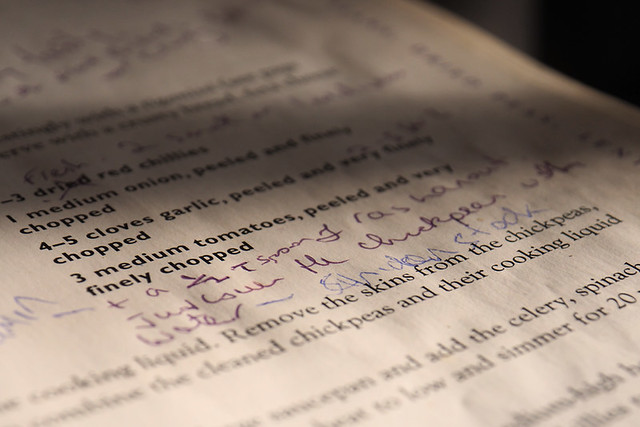In the middle of the 20th century in the cool and shady interior of the Imperial, an unexceptional bar next to the bullring in Santa Cruz de Tenerife, a regular known to the waiting staff as ‘El Barraco’ grabs a seat at the bar’s counter mid-morning and orders his favourite bocadillo (filled baguette), pollo (chicken). To help wash the dry crusty bread down, he requests a concoction of his own making – coffee, milk, condensed milk, and Liquor 43 layered in a tall glass. The stripey drink is finished off with a sprinkling of cinnamon and a tiny slice of lemon zest. It is such an eye-catching drink other customers are keen to try it, giving the curious coffee a thumbs up after doing so. Its popularity catches on rapidly and, a half century and a bit later, the ‘barraquito‘ becomes the specialist coffee of Tenerife and the Canary Islands.

Five past nine on a drizzly Monday morning in an airless office in Manchester and Nigel Keen puts his jacket over the back of his chair, sits down and switches on his PC. He grabs a sheaf of papers, looks at the first and starts typing numbers onto an Excel spreadsheet.
10+7+8+5+7+3+10=50
Following a night of honking antiquated car horns, tripping on his own over-sized shoes and pretending to throw tin buckets of water at a near hysterical audience at Lisbon’s Coliseu dos Recreios in 1908, sad-faced clown Eduardino retreats to a nearby hole-in-the-wall bar. It has a sticky wooden floor and an equally sticky wooden counter – the consequence of too many over-filled shot glasses – both useful adhesives that prevent a drunken clown from falling over. Whilst the bartender chats to his other customers, the increasingly inebriated Eduardino keeps himself amused by experimenting with the bar’s selection of liqueurs. One accidental mix tastes particularly quaffable. Even through his alcohol-fuelled stupor he realises he’s stumbled onto something quite special. The sweet and sour Eduardino ginjinha cherry liqueur is created.

Five past nine on a grey and moody Tuesday morning in an airless office in Manchester and Nigel Keen puts his jacket over the back of his chair, sits down and switches on his PC. He grabs a sheaf of papers, looks at the first and starts typing numbers onto an Excel spreadsheet.
10+7+8+5+7+3+10=50
In eighteen hundred and whatever, a grizzled miner with skin the same colour as his saddlebags breezes into a bar in the Golden Gate City and orders a shot of whisky and, to celebrate a prosperous day’s gold prospecting, a plate of oysters. He downs the whisky then slides the oysters into the empty glass before dowsing them with ketchup, horseradish, vinegar, Worcester sauce and Tabasco. This seafood cocktail could slip into obscurity at this point, but it doesn’t. A tuned-in bar owner spots another ingredient in the glass, business potential. He adds a variation of this seafood cocktail to his menu and the rest is history… sort of. Somewhere along the road oysters are swapped for prawns.

Five past nine on a chilly, dark Wednesday morning in an airless office in Manchester and Nigel Keen puts his jacket over the back of his chair, sits down and switches on his PC. He grabs a sheaf of papers, looks at the first and starts typing numbers onto an Excel spreadsheet.
10+7+8+5+7+3+10=50
“This is not how you make Ceasar salad,” travel blogger Rebecca Findlay-Hall scowls at a bemused waiter in an aspirational restaurant in the Big Smoke. “The lettuce should be romaine not radicchio, these are vinegary boquerones, not salty anchovies… and why are there sun-dried tomatoes on the plate?”
She’s already mentally filling preparing a raft of social media posts berating the restaurant for screwing up the classic Caesar salad. There’s a way classic recipes should be made and the chefs here clearly don’t know their trade.

Friday night and Nigel is finished calculating numbers for the week. He goes home, pours himself a glass of wine and opens his favourite recipe book. Its messy, stained pages look like something from Einstein’s blackboard – numbers and words are scrawled at various sizes and odd angles to fit the once white spaces beside the text. They are adjusted measurements and alternative ingredients; personal additions which stamp Nigel’s gastronomic footprint on the recipe. Nigel, like everyone who is passionate about cooking, from enthusiastic amateurs to innovative top chefs, enjoys experimenting. Trying out a recipe over and over, unlike doing a mathematical calculation, rarely results in exactly the same outcome.
A couple of hundred miles away, Rebecca pulls a plastic tub from a microwave and sits at her kitchen table, her eyes scanning her facebook page to see if there are any comments on her post about the restaurant’s crime against the Caesar salad. Rebecca hates it when restaurants mess with classic dishes, offering her bastardisations. Her views on how classic dishes should be made are as rigid as a mathematical formula.

When it comes to gastronomy, Rebecca is the accountant in this tale. She believes classic recipes should be followed to the letter of the law, there is no room for imagination or experimentation. Rebecca hasn’t twigged that if gastronomy was full of Rebeccas there would be no Caesar salads or prawn cocktails in the first place. The same dishes from one restaurant to the next would all taste exactly the same, never-changing products from a factory line… or maybe even a global fast food chain.
Some of the above is based on facts, or at least what is touted as being facts. The rest is emrelishment. Don’t bother searching Google for a definition of the word, I made it up. Why not? Over 1,000 new words are added to the Oxford English Dictionary ever year. Something language and food preparation have in common is that they are fluid. Both are in a constant state of evolution.
Unless you happen to be a Rebecca.




Be the first to comment